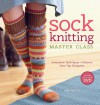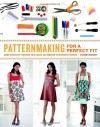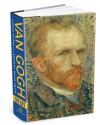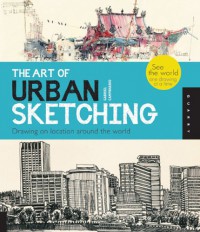Shanidar is reading...
Professional geek, crafter and shoemaker by day. Avid reader, Doctor Who fan and nerd all the time.
Currently reading
La tienda vintage de Astor Place

De entrada la historia parecía una lectura ligera pero interesante para una tarde de sábado: dos vidas compartiendo una misma ciudad en dos épocas diferentes, Historia, contrastes, recuerdos y una portada encantadora.
Sin embargo ha resultado ser una historia lenta y poco atractiva, de personajes planos y situaciones previsibles o nada interesantes.
La tienda vintage de Astor Place es una lectura mediocre que si valoras tu tiempo te ahorrarás...
Teniendo un puente sin planes me he permitido el lujo de terminármelo, puesto que si no lo hubiera hecho hoy, hubiera quedado a medio leer sobre la mesilla para siempre y sin remordimiento.
Desgraciadamente tampoco es un libro suficientemente malo como para poder destriparlo con saña en una review.
Empezando a olvidar esta historia en 3... 2... 1...
The Basics of Corset Building

Good book for absolutely beginners on corset building... and also newbies on sewing.
It offers interesting information on materials and sewing tools, their properties and uses, and useful tips on how to sew a corset that can be applied to other sewing projects. All its instructions are illustrated with several graphics and pictures.
If you already know how to build a corset (and even how to sew) you may find it too basic.
It does not explain how to draft your own corset but the author gives proper instructions on how to alter and fit some commercial corset patterns.
It may not be what I was expecting, but it deserves 4 stars as it offers what it sells. No complains.
The Wonder Singer
 The final chapters are a bit disappointing, but I loved the story of the diva, her first contact with the music and her memories of the Spanish Civil War.
The final chapters are a bit disappointing, but I loved the story of the diva, her first contact with the music and her memories of the Spanish Civil War. After the second part of the book the story is more the one of the writer, his divorce and his weird companions. There are lovely little bits, but the style is totally different, good, but not the same mood of the first pages. Mercè Canals's story goes in the background and her final is poor. This turn is unexpected, a rupture in the charm of the story and thus the last pages disappointment.
La teranyina

La història està bé. Els fets de la Setmana Tràgica tenen molt de suc per una bona novel·la i sempre donen molt de joc amb els sentiments més viscerals: odi, amor, traïció, llibertat...
Però l'escriptura és terrible, la puntuació un maldecap, els canvis de punt de vista un mareig constant,...
El mateix argument l'hagués gaudit molt més escrit per algú altre (o d'una altra manera).
Guida ai detersivi bioallegri. Sintetici, ecologici
 No parlo italià, però no em vaig poder estar de comprar aquest llibre en una fira de la terra que hi havia aquest cap de setmana a Monopoli, Itàlia.
No parlo italià, però no em vaig poder estar de comprar aquest llibre en una fira de la terra que hi havia aquest cap de setmana a Monopoli, Itàlia.Malgrat no dominar l'idioma, me'l vaig llegir d'una tirada. I és que és molt interessant!
M'agrada sobretot que no es tracta només d'un llistat de receptes per fer els propis detergents ni un manifest atacant a qui no usa detergents ecològics o només intentant convècer de fer-ho.
Tampoc és un cúmul d'insensateses ni experiments sense rigor, com es pot llegir en alguns blogs d'internet... que sigui natural no vol dir que sigui innocu (ni que funcioni sense contraindicacions).
El llibre és el resultat d'anys d'experimentació, anàlisis, proves i documentació. En ell s'exposen diferents formes de reduir la contaminació en la neteja de la llar (fins i tot amb productes convencionals), s'explica per què es contamina quan es neteja, quins elements són imprescindibles per la higiene i la desinfecció i quins són només pur màrketing, com conèixer quins productes contenen elements danyins pel medi ambient i per la salut,...
També s'expliquen falsos mites, els contres dels detergents ecològics (requereixen més temps, la vaixella no brillarà tant, la roba no farà olor a "mar" ni la casa olor a "nens" com si això fos sinònim de "net"...) productes ecològics que no funcionen bé per netejar per més fama que tinguin i com reconèixer la publicitat enganyosa en els productes que diuen ser bio o ecològics i que només en tenen l'etiqueta per vendre més car emparats en un buit legal.
Si t'interessa el llibre però no el pots localitzar, cal que sàpigues que en realitat és una síntesi de la web (http://biodetersivi.altervista.org/) i els fòrums del grup MondoNuovo, impulsor de l'edició de mateix, i s'inclouen nombroses referències a Internet per contrastar i complementar la informació.
I finalment, és agradable llegir un llibre de divulgació d'aquest estil que no intenta convèncer ni tenir la raó. Deixa a les mans del lector decidir què és el millor i només fa un recordatori: està a les nostres mans definir quin serà el món que deixarem als nostres fills i néts.
La Barcelona subterrània
 Estic fascinada amb aquest llibre. M'ha encantat trobar per fi un llibre que toca, i des de la no ficció, un tema tan interessant per mi com és la ciutat subterrània. Un recorregut històric i contemporani, mític i real, de descobriment i de confirmació de certeses que ja coneixia però eren quasi com llegendes urbanes,... No: totes aquelles històries són reals i estan documentades i fotografiades en aquest llibre.
Estic fascinada amb aquest llibre. M'ha encantat trobar per fi un llibre que toca, i des de la no ficció, un tema tan interessant per mi com és la ciutat subterrània. Un recorregut històric i contemporani, mític i real, de descobriment i de confirmació de certeses que ja coneixia però eren quasi com llegendes urbanes,... No: totes aquelles històries són reals i estan documentades i fotografiades en aquest llibre.Per què no té 5 estrelles aquest llibre doncs?
Per la/les autora/es l'eix del llibre és una temàtica metafísica, filosòfica, hermètica... i tots els elements de la Barcelona subterrània que es descriuen al llibre estan rera aquest objectiu. A mi personalment tota aquesta motivació em sobra i se m'ha fet molt pesada i excesivament insistent.
He de reconèixer que degut a això m'he saltat alguns fragments (pàgines senceres en algun cas, com l'escrit de l'embarassada o el de la vigília de visitar les clavegueres), que és una cosa que intento evitar fins i tot en el més avorrit dels llibres.
Entenc que per les autores tot això no era prescindible, però no era el que jo anava buscant en el llibre i se m'ha fet molt fatigós.
També ha resultat molt irritant la constant "presència" de la Pitonissa i "el nostre estimat escriptor" (seeeempre anomenant-lo així), quasi com un líder espiritual de tota la troupe i que fa certa "grima" sectària (ja només faltava l'escena final....). També el fet que es vulgui trobar constantment casualitats on no n'hi ha, i que es deixi entendre que precisament aquestes casualitats no existeixen per alguna mena de misticisme o conspiració apocal·líptica, fa pensar si és que en realitat se n'enfoten del lector i tot plegat no és més que una novel·la à la Dan Brown (i si ho fos no mereixeria ni 2 estrelles)... perquè realment, és tan emocionant com una d'aquestes novel·les, i pel fet de ser real és encara més excitant.
Però insisteixo, aquesta impressió i desgrat segurament només siguin perquè aquest era l'eix del llibre i la motivació de per qui i per a qui està escrit, i jo no hi anava buscant això. És una percepció molt personal
A totes aquestes impressions, s'hi afegeix el recarregat llenguatge rimbombant (i fins a cert punt pedant) amb què està escrit tot el llibre, i raó per la qual no li puc donar la cinquena estrella ni tenint en compte l'objectiu (i el públic target) del mateix.
En aquest sentit, els diàlegs que hi apareixen són totalment inverosímils i sobrants. He trobat a faltar la feina d'un editor que assessorés i posés certs límits a l'escriptora, que segurament feia el que bonament podia posant per escrit totes aquestes vivències.
És una pena: el mateix relat en mans d'un altre narrador es llegiria (viuria!) d'una forma encara més intensa.
Però si prescindim d'aquest detalls, que són només petites irritacions que no fan fluida la lectura, m'ha fascinat compartir l'aventura de descobrir aquesta Barcelona oculta sota els nostres peus, tan pròxima i al mateix temps tan llunyana. És un llibre més que recomanable.
Beethoven's Hair: An Extraordinary Historical Odyssey and a Scientific Mystery Solved
 Taking as an excuse the analysis of a Beethoven's lock of hair, "Beethoven's hair" is the biography of the musician, but also of all these people who owned the lock and the History through which it traveled.
Taking as an excuse the analysis of a Beethoven's lock of hair, "Beethoven's hair" is the biography of the musician, but also of all these people who owned the lock and the History through which it traveled. It is a very emotive story, full of hypotheses and subjective novelization mixed with facts and data.
But in spite of all that, it is not a pleasant reading.
The text is full of exceedingly complex subordinate sentences (some of them 9 lines long with commas, dashes and additional comments,) furthermore the author repeats the same sentences, comments and stories once and again. In every chapter he sends us back and forth, and back again, retaking the tale from where he left us pages ago to talk about a friend of the brother of the neighbor of someone who passed by the current owner of the lock... Did he review his writing before sending it to the editor? Did the editor really read the book?
Very poor writing, really.
On the other hand, it's a lovely story to know and a good way to appreciate the little facts that make single lives special ones.
I really loved the story (all the different stories that compose this book), the idea to explain it through a lock of hair, the way to alternate Beethoven's biography with the ones who owned the lock and the progress of the investigation, the emotions, the music sensibility, and the serendipity of all that... and only based on this I would surely give a better rating (in fact, I'm giving a very high rating for my own standards). But I felt dizzy reading it, and if I weren't on holidays, I would have probably abandoned the reading.
The same data in other hands would have made a five stars book.
Lliures o morts (Clàssica)
 Llibre molt ben documentat i històricament correcte, però com a novel·la... li falta esma. I és una llàstima, perquè tant el moment històric com el personatge donen per un relat èpic de la categoria de Braveheart, com ens venen a la faixa.
Llibre molt ben documentat i històricament correcte, però com a novel·la... li falta esma. I és una llàstima, perquè tant el moment històric com el personatge donen per un relat èpic de la categoria de Braveheart, com ens venen a la faixa.És de valorar el gran treball de recerca que hi ha al darrera i l'esforç per informar de tots els fets, però a l'hora d'encaixar dades i batalles amb emocions i acció, grinyola l'engranatge i tot plegat queda bastant forçat, llunyà i fred.
Tampoc hi ajuda l'aparent necessitat de construir frases rimbombants i usar la paraula més pomposa del diccionari de sinònims per donar nivell al llibre... i possiblement això faci desistir a més d'un lector d'arribar fins al final.
Un important punt a favor de "Lliures o morts" és la visió global que s'explica del conflicte, amb punts de vista dels diferents actors que en van prendre part i representat en tota la seva durada. No és "l'11 de setembre de 1714 a Barcelona" és una llarga guerra de caràcter internacional deguda i prolongada per interessos molt diversos. En aquest sentit, pot ser una bona eina per fer més amena una lliçó d'Història i introduir-se en un conflicte molt més complex.
Sobre el mateix període històric i sense ser novel·la, vaig tenir una lectura molt més apassionant amb "La guerra de successió i els setges de Barcelona (1697-1714)", del professor Josep Maria Torres i Ribé. Aquest sí que el recomano amb 5 estrelles!
Diseño de calzado (Gg Moda (gustavo Gili))
 Interesante y completo libro para quién tenga interés en el diseño de calzado.
Interesante y completo libro para quién tenga interés en el diseño de calzado. El libro ofrece pautas para la comprensión del mundo del zapato, desde la horma, pieles y materiales, colores, soportes de diseño, hasta la presentación de una colección o envío de CV a empresas.
Son especialmente interesantes las entrevistas a diseñadores y zapateros.
Diseño de calzado urbano
 "Diseño de calzado urbano" es uno de los pocos libros que explican el proceso de principio a fin para la creación de un zapato: desde el curtido de la piel, al diseño, las hormas, anatomía del pie... muy completo y a la vez insuficiente. Dudo que alguien sea capaz de fabricar un zapato sólo con los apuntes de este libro.
"Diseño de calzado urbano" es uno de los pocos libros que explican el proceso de principio a fin para la creación de un zapato: desde el curtido de la piel, al diseño, las hormas, anatomía del pie... muy completo y a la vez insuficiente. Dudo que alguien sea capaz de fabricar un zapato sólo con los apuntes de este libro.Realizado por una profesora universitaria, el libro está además cargado de faltas de ortografía, de sintaxis y su organización es algo caótica.
Parecen más los apuntes tomados en clase por un estudiante de la asignatura que un libro realmente trabajado. Una pena, puesto que un libro de estas características un poco más cuidado y trabajado sería una gran guía y referente para zapateros (auténticos zapateros, no vendedores de zapatos... aunque algo también podría interesarles) y diseñadores de calzado.
La palabra más hermosa
 Este libro merece por lo menos 4 estrellas. Si fueran 3 libros diferentes hubiera repartido 12 estrellas. Y lo castigo con 2, por no haber sabido cortar a tiempo y eliminar páginas y páginas de poesía zumbona.
Este libro merece por lo menos 4 estrellas. Si fueran 3 libros diferentes hubiera repartido 12 estrellas. Y lo castigo con 2, por no haber sabido cortar a tiempo y eliminar páginas y páginas de poesía zumbona.No hay frase que no refleje un gran trabajo de composición detrás de ella. Cada palabra inspira belleza, ritmo y poesía... magnífico y elogiable, pero demasiado para 524 páginas. Agota.
La historia es enternecedora. El texto, desgranado palabra por palabra, maravillosamente escrito. Pero me ha puesto de los nervios no saber de qué iba la historia: primero parece que será la guerra, luego una historia de amor, luego eternas páginas de infertilidad y enfermedad, ah, no, espera, otra vez la guerra...
También me han exasperado las frases cortas. Belleza breve. Frases sin verbo. Constantemente. Bonito, pero 524 páginas de encender y apagar un motor renqueante, echando cubos de agua helada sobre una lectura que no puede ser agradable.
Y finalmente, otro punto que no ha conseguido engancharme al libro, pero que no puedo asegurar que no sea un problema de traducción: descontrol en los tiempos verbales. Se trata de una historia que va saltando del presente al pasado a través de la voz de la narradora... que utiliza los verbos en presente y en pasado independientemente de en qué momento esté... incluso dentro de una misma frase.
Al leer este libro he estado semanas y semanas en tensión. Abandonándolo y retomándolo. Odiándolo a pesar de reconocer su belleza y admirar lo bien que transmitía lo terrible de una guerra.
Las últimas 50 páginas del libro me han hecho flojear en la decisión: "le voy a dar 4!"... quizás por esto tiene una valoración general tan alta. Y quizás sólo por esto me he visto en la necesidad de avisar a futuros lectores: te encantará, le darás 4 estrellas, pero en el camino lo odiarás.
The Small Hand
 I have had read lots of reviews of this book promising a terrifying ghosts story: fear, goosebumps, chills...
I have had read lots of reviews of this book promising a terrifying ghosts story: fear, goosebumps, chills...In fact, I was avoiding "The Small Hand" because I wasn't quite ready for such amount of fear and I was extremely occupied to lost my resting hours with nightmares.
Maybe I expected to much. "The Small Hand" is ok, but it is not by far the scariest story I've read.
It is short and it goes well. There are pages with lots of concentrated tension, they pass quickly and you only want to know which is the terrific thing that will come next... but when you turn the page... nothing. Well yes: disappointment. It promises a big scare and it happens nothing.
Once, twice, thrice... disappointment after disappointment.
There are moments while reading that you are preparing the 4 stars... and suddenly you will not give more than 2.
"The Small Hand" is a rollercoaster of tension and boredom synthesized in little more than 150 pages. No more pages needed. Maybe deleting few central pages of flat inaction and irrelevant issues, the result would be a very frightening short story.
Anyway: cliche.
No mistakes: this is not a bad book. This is only a very personal opinion of a reader who began the book with high expectations of pure horror.
In spite of that, the book is a pleasant reading for readers that are not searching strong emotions and are not bored of worn topics.
Revelations (Blue Bloods, Book 3)
 Third book in a large serie of youth posh vampire books, this is not the best one.
Third book in a large serie of youth posh vampire books, this is not the best one.Lot of pages to say nothing that the reader couldn't imagine in previous books. It lacks the adrenaline of the first ones, and introduces an exaggerate and affected drama to the plot.
As in a soap opera, it is the typical Wednesday chapter, created to fill the schedule and only introduces something new at the end, letting open issues to make you read the next one.
Fairies, Gnomes & Trolls: Create a Fantasy World in Polymer Clay
 I loved the way how this book introduces you in every project with a little story about the gnome, troll or fairy in question.
I loved the way how this book introduces you in every project with a little story about the gnome, troll or fairy in question.It's so sweet and brings a drop of magic in the creation process.
On the other hand, figures are not exceptional and understood one project, understood all. Maybe for this reason the first projects are very well explained, step by step, and the last ones are like "ok, you do know how it works so it's not necessary that I tell you more". That doesn't mean that they are easy to do: they aren't.
Anyway: a wonderful book for people to want to learn sculpting in polymer clay and loves magic and fantasy.
Miss Peregrine's Home for Peculiar Children
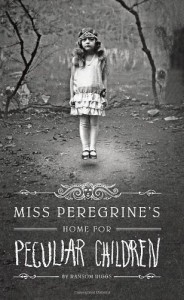 Have you ever felt dizzy when you end a book? You know, this feeling like waking up from a strange and vivid dream of which you don't want to wake up?
Have you ever felt dizzy when you end a book? You know, this feeling like waking up from a strange and vivid dream of which you don't want to wake up?This is one of these books that put you in the mood.
It stuck me until the end, jumping in the sofa whenever I heard any sound at home, wanting to read more and more. It is very well written (though it appears "Billy" in the middle of a scene where there is no Billy... in fact, there aren't any Billys in all the book!) and the author knows how to get you caught in the flow.
Surely influenced by the cover, initially I thought that this will be a truly scary story... but tough the tension of some scenes, it is mainly a gothic adventure for young adults with lots of freaky characters.
Anyway, it is ideal to read in one sitting, in a quiet and raining afternoon.
When you finish it, you'll rate it with 4 stars. No doubt. But when you sit to do the review and think about the plot... you realize you've given the stars to the wonderful afternoon you spent with it, not to the story per se.
The action doesn't begin until the third part of the book, and the end is open, bringing you to the author's bio to know when will he finish the next one. You don't need to know how it follows, you need more of this mood.
Another lovely thing of this book are the vintage pictures that illustrated it, and inspired most of the characters... Had I know it, I would not have bought the Kindle edition!
Is "Miss Peregrine's Home for Peculiar Children" original? Surely is not. Blend a bit of X-Men, time-traveling, Doctor Who and child nightmares and you get it.
But anyway: I loved it.

